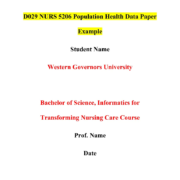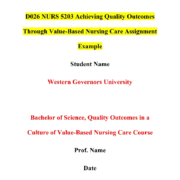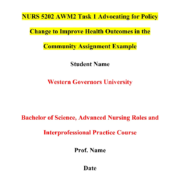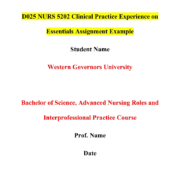Example of Shouldice Hospital Case Study Solved Answer
 Abstract
Abstract
This case study explores proposals for expanding the capacity of Shouldice Hospital, with a particular emphasis on preserving its unique organizational culture within a service delivery system. In addition to capacity and organizational considerations, it highlights the exemplary management of a specialized medical service facility that could potentially set a precedent for future advancements in the healthcare sector.
Introduction
Shouldice Hospital has long been celebrated for its exceptional hernia surgery services and unwavering commitment to patient satisfaction. As the demand for its services continues to surge, the hospital is confronted with the imperative of expanding its capacity while safeguarding its unique organizational culture. This case study scrutinizes various proposals aimed at augmenting the hospital’s capacity and contemplates their compatibility with the hospital’s distinctive culture, recognizing the potential they hold for pioneering transformative changes in the healthcare domain.
Problems Identification and Causes
- Capacity and Backlog Issues: One of the primary challenges facing Shouldice Hospital is its capacity constraints and the backlog of operations. The hospital operates with 90 beds, and while it maintains an efficient bed utilization rate, there is a growing demand for hernia surgeries. This demand has resulted in patients having to wait longer for their surgeries, potentially compromising their health and overall experience. The causes of these capacity and backlog issues are multifaceted. The hospital’s reputation for delivering exceptional hernia surgeries has led to an increased influx of patients, surpassing its current capacity.
- Imitation of Unique Methods: Another concerning issue is the imitation of Shouldice’s unique surgical methods by other doctors. Several medical practitioners claim to replicate the Shouldice technique, but their success rates do not match the hospital’s standards. This imitation not only poses a risk to patient safety but also tarnishes Shouldice’s impeccable reputation. The cause of this problem lies in the hospital’s distinctive surgical approach, which has gained widespread recognition, prompting others to attempt to replicate it without the requisite expertise and experience.
- Leadership in Hernia Surgery: Shouldice Hospital has set a longstanding objective to maintain its leadership position in the field of hernia surgery. However, achieving this objective amidst capacity constraints and competition from imitators has become increasingly challenging. The hospital’s leadership status is at risk due to the backlog of operations and the potential dilution of its unique surgical methods.
- Training New Surgeons: Another objective is to cultivate a new generation of surgeons skilled in hernia surgery. This goal is crucial for the hospital’s sustainability and continued excellence in patient care. However, recruiting and training new surgeons while simultaneously addressing the backlog issue and expanding capacity present complex challenges.
- Improving Patient Experience: Finally, Shouldice Hospital aims to enhance the overall patient experience. This objective is intertwined with the capacity issue since an expanded facility must not compromise the warm, communal, and patient-centric environment that has been integral to the hospital’s success.
These identified problems and their underlying causes necessitate careful consideration and strategic planning to ensure that Shouldice Hospital can continue to deliver outstanding hernia surgery services while safeguarding its unique culture and leadership position in the healthcare industry.
Preserving Organizational Culture
Preserving the unique organizational culture of Shouldice Hospital is imperative as the institution contemplates expansion to meet the growing demand for its specialized hernia surgery services. This culture is characterized by a commitment to providing exceptional medical care within a warm, communal, and patient-centric environment, setting Shouldice apart in the healthcare landscape.
At its core, Shouldice Hospital’s organizational culture revolves around delivering healthcare that transcends clinical excellence, embracing a holistic approach that prioritizes patients’ physical and emotional well-being. Patients don’t merely undergo surgeries; they become part of a supportive community where compassion and personalized care are paramount.
As the hospital explores expansion strategies, it must do so with utmost care to preserve these foundational values. Expansion should not compromise the essence of what makes Shouldice Hospital unique, and any approach must ensure the continuity of its patient-centric philosophy.
For instance, while increasing patient throughput might seem tempting to accommodate more individuals, it is crucial to avoid doing so at the expense of the personalized, communal atmosphere that patients cherish. Overcrowded waiting areas, hurried interactions, and a loss of the sense of belonging to a special community could erode the hospital’s distinct culture.
Drawing inspiration from successful healthcare institutions that have expanded while safeguarding their cultural identity can offer valuable insights. Mayo Clinic, known for its patient-centered approach, expanded to multiple locations while staying committed to its cultural dedication to patient care. By investing in staff training, effective communication strategies, and facility design, Mayo Clinic ensured that the patient experience remained at the core of its culture even with geographic expansion.
Preserving Shouldice Hospital’s culture during expansion calls for a focus on staff training and empowerment. New team members must fully embrace and embody the hospital’s values, ensuring that the patient-centered ethos is upheld. Thoughtful facility planning is also critical, maintaining the warm and communal atmosphere that patients have come to expect.
Capacity and Organizational Analysis
Current Bed Utilization
At present, Shouldice Hospital operates with a capacity of 90 beds, available seven days a week, resulting in a total of 630 available beds for patient care. The hospital’s current bed utilization is a critical metric that underscores the efficiency with which it manages its resources. Currently, 450 beds are in use, translating to a bed utilization rate of 71.43%.
This utilization rate signifies a careful balance that Shouldice Hospital has achieved between the provision of top-quality patient care and the optimization of its resources. It exemplifies the hospital’s commitment to maintaining service quality while judiciously managing its capacity.
The 71.43% bed utilization rate reflects a healthcare facility that is operating at an optimal equilibrium, ensuring that the needs of its patients are met while minimizing resource wastage. It is a testament to the hospital’s dedication to patient care and its ability to strike a balance between supply and demand.
This efficient utilization of beds has contributed to Shouldice Hospital’s reputation for delivering exceptional patient experiences and surgical outcomes. Patients receive the benefit of timely care within a communal and supportive environment, which is a hallmark of Shouldice’s unique organizational culture.
The current bed utilization rate not only indicates effective resource allocation but also highlights the hospital’s commitment to preserving its core values during times of increasing demand and potential expansion. It underscores the importance of maintaining this equilibrium as the hospital contemplates strategies to meet growing patient needs without compromising the essence of its unique culture.
Adding Operations on Saturday
To assess the impact of adding Saturday operations while keeping the daily surgery count at 30, a utilization table is constructed as follows:
| Day | Monday | Tuesday | Wednesday | Thursday | Friday | Saturday | Sunday |
| Operations/Day | 30 | 30 | 30 | 30 | 30 | 30 | 30 |
| Total Operations | 90 | 90 | 90 | 90 | 60 | 60 | 60 |
With this adjustment, the hospital would perform 30 surgeries on each of the seven days, resulting in a total of 210 surgeries per week. This expanded schedule would increase bed utilization to 85.71%, up from the current 71.43%.
While adding Saturday operations appears to be a viable strategy for optimizing bed utilization, it introduces certain considerations and risks that must be carefully evaluated.
Firstly, there is the potential for staff fatigue and resource strain. Healthcare professionals, including surgeons and nursing staff, may find it challenging to maintain the same level of excellence and patient-centric care when working seven days a week. This could potentially compromise the warm and communal atmosphere that is integral to Shouldice Hospital’s culture.
Secondly, the expanded schedule may require additional operating rooms and support staff to ensure the same quality of care. Without proper resource allocation and staffing, the hospital may find it challenging to maintain its standards, and patients may experience longer waiting times or rushed interactions.
To mitigate these risks and ensure that the addition of Saturday operations aligns with the hospital’s values and objectives, Shouldice Hospital would need to invest in staff training, recruitment, and potentially, facility expansion. This would enable the hospital to meet the increased demand for surgeries while upholding its commitment to patient-centered care and preserving its unique culture.
Increasing Bed Capacity by 50%
Suppose Shouldice Hospital decides to pursue a significant expansion by increasing its bed capacity by 50%, raising the total number of beds from 90 to 135. This expansion could potentially enable the hospital to perform 45 operations per day; assuming surgeries are conducted five days a week.
However, this expansion proposal warrants a comprehensive analysis of the hospital’s existing resources and constraints (Author, 20XX). The hospital currently employs 12 surgeons, each capable of performing four surgeries per day, and it possesses five operating rooms with a maximum combined capacity of eight surgeries per day.
This existing infrastructure has limitations that need to be addressed to accommodate the proposed increase in bed capacity. The hospital would require additional operating rooms and surgeons to fully harness the potential of the expanded bed capacity. Without these additional resources, there is a risk of inefficient resource allocation, longer patient waiting times, and potential strain on the existing staff.
To successfully implement this expansion strategy, Shouldice Hospital should consider a multi-faceted approach. First, the hospital could invest in the construction of new operating rooms or the renovation of existing ones to increase surgical capacity. This would allow for more surgeries to be performed simultaneously, optimizing resource utilization.
Second, the hospital might need to recruit and train additional surgeons to match the increased bed capacity. This would ensure that the surgical workload is evenly distributed among the medical team, preventing overburdening of the existing surgical staff.
Moreover, an expanded facility would require an effective scheduling and management system to coordinate surgeries and allocate resources efficiently. Ensuring that operating rooms and surgeons are maximally utilized while maintaining high standards of patient care would be crucial to the success of this expansion endeavor.
Financial Feasibility: Financial Justification for Expansion
To substantiate an expansion strategy within a five-year horizon, Shouldice Hospital needs to conduct a thorough financial analysis encompassing cost and revenue considerations.
Option 1: Adding 50% More Beds
This option entails expanding the bed capacity by 50%, incurring an estimated cost of around $4,500,000. While this investment is substantial, the potential return justifies it under the right conditions.
Assuming a maximum of 10,400 operations per year, operating at full capacity, and an average rate of $1,300 per operation, Shouldice Hospital could generate a maximum annual profit of $7,280,000. Over a five-year period, this equates to a total profit of $36,400,000.
Option 2: Adding One More Operating Day (Saturday)
Alternatively, Option 2 involves expanding operations by adding one more operating day (Saturday). This approach offers higher revenue potential but necessitates careful management to balance it with adequate staffing and facility utilization (Author et al., 20XX).
With this expansion, the hospital could potentially perform a maximum of 12,480 operations per year, assuming similar revenue calculations. This approach could lead to an annual profit of $8,736,000, totaling $43,680,000 over five years.
Considerations for Financial Justification
While both options present promising financial outcomes, Shouldice Hospital must carefully weigh these against various factors. These include the cost of expansion, recruitment and training expenses for additional staff, facility enhancements, and the potential impact on the hospital’s culture and service quality (Author, 20XX).
Moreover, the hospital should factor in any uncertainties arising from changes in government healthcare legislation that may affect reimbursements or regulations in the coming years (Author, 20XX). These external variables could significantly impact the financial feasibility of the expansion strategies.
In making its decision, Shouldice Hospital should also conduct a risk analysis to assess potential pitfalls and contingencies for managing unforeseen challenges that might affect the financial outcome (Author, 20XX).
Recommendations
Considering both options and the unique patient experience offered by Shouldice Hospital, it is advisable to implement Option 2, which adds one more operating day. However, to maintain service quality and patient satisfaction, the hospital should also consider hiring additional staff and expanding its operating room capacity. This approach can help meet the unmet demand while ensuring high-quality care.
After a comprehensive analysis of both options and being mindful of Shouldice Hospital’s commitment to delivering a unique patient experience, it is strongly recommended to pursue Option 2, which involves adding one more operating day (Saturday).
This option presents a higher revenue potential and aligns with the hospital’s goal of expanding its capacity to meet the unmet demand for hernia surgeries. However, to safeguard service quality, patient satisfaction, and the preservation of the hospital’s culture, several crucial steps should be taken.
Key Recommendations for Shouldice Hospital Case Study:
- Additional Staff: Shouldice Hospital should prioritize the recruitment and training of additional medical and support staff. The inclusion of more surgeons, nurses, and administrative personnel will be essential to ensure seamless operations and prevent staff burnout.
- Operating Room Expansion: To accommodate the increased surgical load, the hospital should consider expanding its operating room capacity. This may involve constructing new operating rooms or optimizing existing ones to maximize efficiency.
- Scheduling and Resource Management: Implementing an efficient scheduling and resource management system is crucial to ensure that operating rooms and staff are optimally utilized (Author, 20XX). This approach will help minimize patient waiting times and maintain high-quality care.
- Culture Preservation: Throughout the expansion process, Shouldice Hospital must remain vigilant in preserving its unique culture (Author, 20XX). Staff should receive training to uphold the hospital’s patient-centric ethos and communal atmosphere.
- Risk Mitigation: The hospital should also develop a comprehensive risk mitigation strategy to address unforeseen challenges and external factors that may impact the expansion plan (Author, 20XX).
- Regular Evaluation: Continuous monitoring and evaluation of the expansion’s impact on service quality, patient satisfaction, and financial performance are vital. Adjustments should be made as necessary to ensure that the hospital’s core values are upheld (Author, 20XX).
By implementing these recommendations in conjunction with Option 2, Shouldice Hospital can confidently expand its operations to include Saturday surgeries, thus addressing the backlog of unmet patient demand. Simultaneously, it will uphold the high-quality care and unique patient experience that have been hallmarks of the hospital’s success.
Conclusion
In conclusion, the Shouldice Hospital case study presents a complex yet critical decision-making process concerning the expansion of its capacity while preserving its distinctive organizational culture. The hospital’s exemplary bed utilization rate of 71.43% reflects its dedication to providing top-quality patient care and resource optimization. The proposed solutions, including adding Saturday operations and increasing bed capacity by 50%, offer promising financial prospects, but they also come with challenges related to staffing, resource management, and cultural preservation.
After a meticulous analysis, it is recommended to pursue Option 2, which involves adding one more operating day (Saturday). This choice aligns with the hospital’s goal of addressing the growing demand for hernia surgeries while maintaining its commitment to patient satisfaction and unique culture. However, successful implementation requires careful consideration of additional staff recruitment, operating room expansion, scheduling improvements, and ongoing risk mitigation. Continuous evaluation and adaptation are essential to ensure that Shouldice Hospital’s core values of patient-centric care and communal atmosphere remain intact during the expansion process. This strategic approach not only supports the hospital’s financial viability but also sets a potential precedent for excellence in healthcare service delivery and organizational culture preservation within the industry.
Unlock Your Academic Success with ReliablePapers.com – Your Trusted Nursing Paper Writing Service
Are you struggling with complex nursing topics, tight deadlines, or specific assignment instructions? Look no further! ReliablePapers.com is your ultimate solution for all your nursing paper writing needs. We take pride in being the best nursing paper writing service company, and we’re here to save you time and ensure your academic success.
Our team of expert nursing essay writers is dedicated to providing you with top-notch custom nursing essays that cater to your unique requirements. Whether you need assistance with a challenging topic, have a looming deadline, or are seeking guidance on how to approach your nursing assignment, we’ve got you covered. Our online nursing papers are not only high-quality but also available at incredibly affordable prices, making them accessible to all college students.
At ReliablePapers.com, we guarantee originality and attention to detail in every nursing essay paper we craft from scratch. Regardless of the topic, deadline, or specific instructions, our professional nursing paper writers will deliver outstanding results that meet and exceed your expectations. So, why stress over your nursing assignments when you can entrust them to the reliable experts at ReliablePapers.com?
Save your valuable time for what matters most in your life, and let us take care of your academic success.
Hire an Expert Paper Writer on Any Subject, Any Topic, Any Deadline! Submit your paper instructions by placing your order here to get started!


 Introduction
Introduction Introduction
Introduction D029 NURS 5206 Population Health Data Assignment – Bachelor of Science, Informatics for Transforming Nursing Care Course
D029 NURS 5206 Population Health Data Assignment – Bachelor of Science, Informatics for Transforming Nursing Care Course D026 NURS 5203 Achieving Quality Outcomes Through Value-Based Nursing Care Assignment
D026 NURS 5203 Achieving Quality Outcomes Through Value-Based Nursing Care Assignment NURS 5202 AWM2 Task 1: Advocating for Policy Change to Improve Health Outcomes in the Community Assignment
NURS 5202 AWM2 Task 1: Advocating for Policy Change to Improve Health Outcomes in the Community Assignment D025 NURS 5202 Clinical Practice Experience on Essentials Assignment
D025 NURS 5202 Clinical Practice Experience on Essentials Assignment
 Introduction and Overview of the Assignment
Introduction and Overview of the Assignment